Comings and goings were rife in Cycle magazine's July, 1961, issue. Along with the news that a little start-up company called American Honda would be launching "one of the largest and most extensive sales campaigns ever planned by any motorcycle manufacturer," including ads for its 50cc step-throughs in Life magazine, "some in full color," came a somber announcement about the passing of Mr. Albert Crocker.
"One of the best known and beloved figures throughout many years in the history of motorcycling, Al Crocker recently passed away at his home in South Pasadena at the age of 73. He had been in excellent health and died suddenly after an illness of only two days," wrote Publisher Floyd Clymer. "I was especially saddened by the news of his death, as I had known Al Crocker since I was about 15 years of age."
Al was a very capable engineer and designer, and started the manufacture of the Crocker 30.50-cubic-inch single-cylinder speedway bike, which was used successfully by many of the best riders on the Pacific Coast when speedway racing was at its height. He built 31 speedway bikes, and gave the J.A.P.-powered bikes a lot of tough competition. About 1936 he decided to build a 61-inch, overheard-valve V-Twin, and this was developed by Mr. Crocker in his own machine shop, assisted by well-known rider P.A. Bigsby, who was also a pattern maker. Crocker had more orders than he could possible fill for the Crocker Twin, which was definitely the best motorcycle produced in this country at that time. According to Bigsby, 64 Crocker Twins were built.
"Thousands of friends of Al Crocker, a real veteran, will mourn his passing—and our sympathy goes to those who survive him. The name of Al Crocker will long live in the Hall of Fame of motorcycle men who contributed greatly to the sport of motorcycling in the early years."
That's certainly true of the bikes that bear his last name. Always collectible blue-chippers, in the past two years values of well-restored Crockers have skyrocketed. Used to be that $100,000 would get you a very good example; nowadays you can double that and add $50,000 more! In the May issue's "Tale of Two Crockers," we tell the story of two 1939 Crockers that came down the assembly line together but thereafter took diametrically divergent paths.
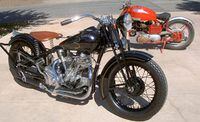
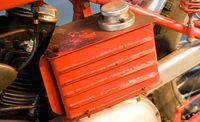
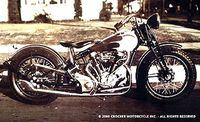
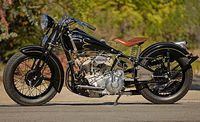
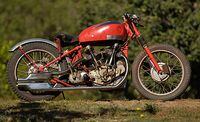
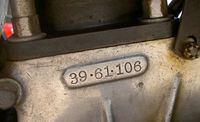
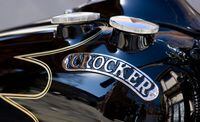
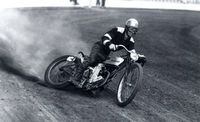
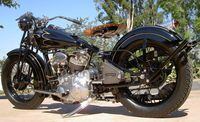
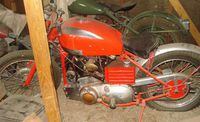
/cloudfront-us-east-1.images.arcpublishing.com/octane/ZBLIY3XNQ5ACNNJ65IL44KBZAE.jpg)
/cloudfront-us-east-1.images.arcpublishing.com/octane/HDO56KGQB5H25DJRM2J2PH2E5A.jpg)
/cloudfront-us-east-1.images.arcpublishing.com/octane/NZKPFUWBHVGYJAFQPCXWAK6BZM.jpg)
/cloudfront-us-east-1.images.arcpublishing.com/octane/K5ZSQFMYQZHWRFXTTW4PEWMUDM.jpg)
/cloudfront-us-east-1.images.arcpublishing.com/octane/D2SOSBIQQRBPTERNSOJRAW3KYY.jpg)
/cloudfront-us-east-1.images.arcpublishing.com/octane/DS3Q5X2VJFFAJDK2PWB3Y7K6U4.jpg)
/cloudfront-us-east-1.images.arcpublishing.com/octane/4KBL4JAMYRFDPEINTWATDUH7OM.jpg)
/cloudfront-us-east-1.images.arcpublishing.com/octane/FXADK3MVSNBRTKJ2B7TPDCCJ5Y.jpg)
/cloudfront-us-east-1.images.arcpublishing.com/octane/M7L2CPXO55FRFMECW7QGDPGP6E.jpg)
/cloudfront-us-east-1.images.arcpublishing.com/octane/T4RWGLAEHVE2VCJZOTFTNGB2KA.jpg)
/cloudfront-us-east-1.images.arcpublishing.com/octane/JM4QGLAHWNGHPM74OEB7FVBFSY.jpg)
/cloudfront-us-east-1.images.arcpublishing.com/octane/BGPNXPDDYBHD3HL6YEZQOYHXTI.jpg)
/cloudfront-us-east-1.images.arcpublishing.com/octane/SND5GGQV4RDPPMZBSBEGIZ4SIY.jpg)
/cloudfront-us-east-1.images.arcpublishing.com/octane/XUDDAPYZMZEL5EDPVDJ2DTULWI.jpg)
/cloudfront-us-east-1.images.arcpublishing.com/octane/M7AU2L6GAVCJVHW57LIRPDAAUQ.jpg)
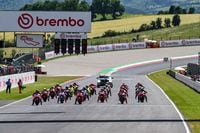
/cloudfront-us-east-1.images.arcpublishing.com/octane/JKEJY7P43JGD5C5NJO2VJQJPUM.jpg)
/cloudfront-us-east-1.images.arcpublishing.com/octane/YROKYJYUQVGPHCEMPTGBWDQCKQ.jpg)
/cloudfront-us-east-1.images.arcpublishing.com/octane/QIHEYR66TZDAPCGMWHCWCBC4XA.jpg)
/cloudfront-us-east-1.images.arcpublishing.com/octane/4FTBMNZL5BD2ZHY62XXRHJW6PI.jpg)
/cloudfront-us-east-1.images.arcpublishing.com/octane/L2BHKRCEMFDF7O3S4REZXPDH2E.jpg)
/cloudfront-us-east-1.images.arcpublishing.com/octane/QHENIV3HMJCTTCXQ6O5YPTNRZ4.jpg)
/cloudfront-us-east-1.images.arcpublishing.com/octane/K3VNQBIAKVGIHIGBRG7QKJYLVI.jpg)
/cloudfront-us-east-1.images.arcpublishing.com/octane/HRU64QXT3NH2DJOFBVI53XIKCE.jpg)